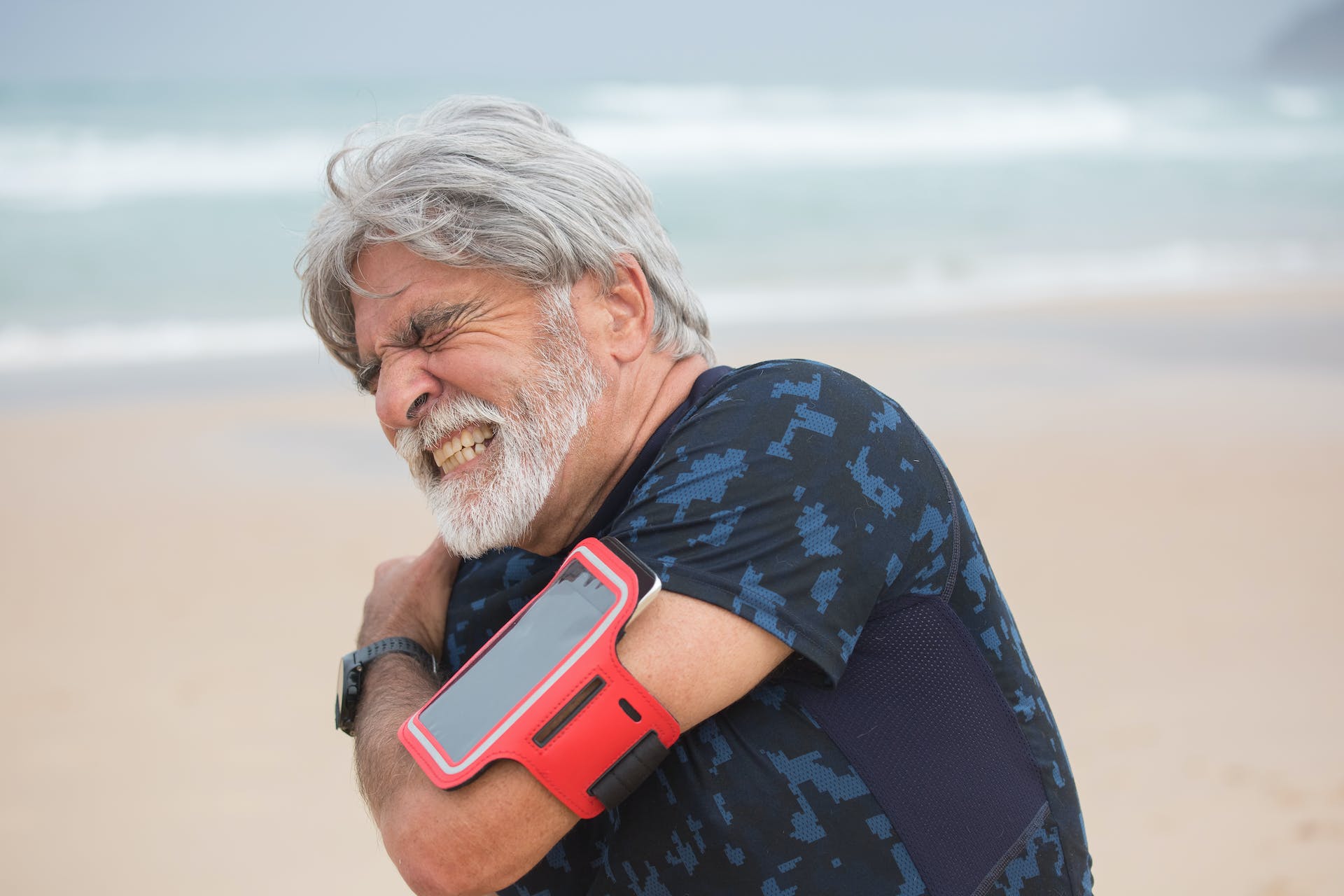“Treatment of chronic pain syndrome (CPS) must be tailored to each patient. The treatment should be aimed at the interruption of reinforcement of the pain behavior and modulation of the pain response. The goals of treatment must be realistic and should be focused on restoration of normal function (minimal disability), better quality of life, reduction of use of medication, and prevention of relapse of chronic symptoms.” (Manish, 2017)
Recognize Chronic Pain
Recognizing that chronic pain is a problem is the first step in finding treatment. Start by talking to your doctor about chronic pain symptoms. Together you can identify the source of the pain and produce a comprehensive treatment plan that considers your overall health and lifestyle (Deborah, 2016). However, you might find solutions to various, even severe long-term chronic pain complications by reading this brief article, which is intended as general guidance based on the most recent scientific know-how, but is not meant to replace medical advice.
The 11 Ways to Alleviate Chronic Pain
1. Topical pain reliefs: Oral medications are not the only type of OTC pain relief. Topical creams are also available. These are often used to relieve pain associated with arthritis and muscle aches.
2. Treatment for back pain: Among people seeking back pain relief alternatives, most choose chiropractic treatment.
Chiropractors use hands-on spinal manipulation and other alternative treatments, the theory being that proper alignment of the body’s musculoskeletal structure, particularly the spine, will enable the body to heal itself without surgery or medication.
Treatment for the leg pains: Feet. They carry you from here to there every day. But you may not think much about them until they hurt.
If your pain is in your heel, you may have plantar fasciitis. That is an irritation or inflammation of the band of tough tissue connecting the heel bone to the toes.
Heel spurs are another source of foot pain. These are abnormal growths of bone on the bottom of your heel. You can get them from wearing the wrong shoes or from an unusual walk or posture, or even from activities like running.
To alleviate them:
- Wear a cutout heel pad.
- Use a custom-made insert (called an orthotic) worn in the shoe.
- Wear shoes that fit well and have shock-absorbing soles.
3. Exercise: Regular exercise and physical therapy are usually part of any pain management plan.
Dr. Teitelbaum believes exercise is critical in the relief of pain. A substantial percentage of pain comes from tight muscles. These may be triggered by overuse, inflammation, or other conditions.
Regular exercise is essential for treating chronic pain because it helps:
- strengthen muscles
- increase joint mobility
- improve sleep
- release endorphins
- reduce overall pain
4. Relaxation: Relaxation techniques are often recommended as part of a treatment plan. They help to reduce stress and decrease muscle tension. Relaxation techniques include:
- meditation
- massage
- yoga
Yoga also has other benefits for chronic pain. It can help strengthen muscles and improve flexibility.
5. Biofeedback: Biofeedback is another technique for pain management. It works by measuring information about physical characteristics such as:
- muscle tension
- heart rate
- brain activity
- skin temperature
The feedback is used to enhance an individual’s awareness of physical changes associated with stress or pain. Knowledge can help a person train themselves to manage physical and emotional pain.
6. Acupuncture and acupressure: Acupuncture and acupressure are types of traditional Chinese medicine. They relieve pain by manipulating key points of the body. This prompts the body to release endorphins which can block messages of pain from being delivered to the brain.
7. Anticonvulsants (Anti-seizure) Medications: These medications can be beneficial for some kinds of nerve type pain (such as burning, shooting pain). These medications also are not meant to be taken on an “as needed” basis. They should be taken every day whether you feel pain.
8. Antidepressants: Antidepressants are drugs that can treat pain and emotional conditions by adjusting levels of neurotransmitters (natural chemicals) in the brain. These medications can increase the availability of the body’s signals for well-being and relaxation, enabling pain control for some people with chronic pain conditions that do not entirely respond to usual treatments. Research suggests antidepressants work best for neuropathic or nerve pain.
Some antidepressant medications include:
- Selective serotonin re-uptake inhibitors (SSRIs) such as citalopram (Celexa), fluoxetine (Prozac), paroxetine (Paxil), and sertraline (Zoloft)
- Tricyclic antidepressants such as amitriptyline, desipramine (Norpramin), doxepin (Silenor), imipramine (Tofranil), and nortriptyline (Pamelor)
- Serotonin and norepinephrine reuptake inhibitors (SNRIs) such as venlafaxine (Effexor) and duloxetine (Cymbalta)
9. Corticosteroids: Provides relief for inflamed areas of the body by easing swelling, redness, itching and allergic reactions. Corticosteroids can be used to treat allergies, asthma, and arthritis.
10. Opioids: When you have a mild headache or muscle ache, an over-the-counter pain reliever is usually enough to make you feel better. But if your pain is more severe, your doctor might recommend something stronger, such as opioids.
Opioid drugs work by binding to opioid receptors in the brain, spinal cord, and other areas of the body. They reduce the sending of pain messages to the brain and overcome feelings of pain. Opioids are used to treat moderate to severe pain that may not respond well to other pain medications.
Some types of opioid drugs include:
- codeine (only available in generic form)
- fentanyl (Actiq, Duragesic, Fentora)
- hydrocodone (Hysingla ER, Zohydro ER)
- hydrocodone/acetaminophen (Lorcet, Lortab, Norco, Vicodin)
- hydromorphone (Dilaudid, Exalgo)
- meperidine (Demerol)
- methadone (Dolophine, Methadose)
- morphine (Astramorph, Avinza, Kadian, MS Contin, Ora-Morph SR)
- oxycodone (OxyContin, Oxecta, Roxicodone)
- oxycodone and acetaminophen (Percocet, Endocet, Roxicet)
- oxycodone and naloxone (Targiniq ER)
Your doctor can prescribe most of these drugs to take orally. Fentanyl is available in a patch. A patch allows the medication to be absorbed through the skin.
Side effects of opioids may include:
- Drowsiness
- Nausea
- Constipation
- Itching
- Breathing problems
- Addiction
11. One of the best options for relieving various chronic pains is vasodilation: Vasodilation is best administered to significantly alleviate chronic pains, it is non-opioid, highly efficient and non-addictive. Vasodilation may reduce restrictions of blood flow through the blood vessels, decreasing blood pressure, while increasing blood circulation. Improved vasodilation functions inside the body may benefit a person in many ways. Common benefits of improved vasodilation may include:
Improved recovery: A benefit of vasodilation may be improved recovery. Muscles can become damaged for a variety of reasons, most commonly by injury, surgery, or overuse. When muscles are damaged, the body’s natural healing process is activated aiming to repair damaged tissues and fibers.
Very often, healing can be slowed down due to a range of reasons, impeding recovery. Common reasons for slower healing may include swelling, poor circulation, muscle fatigue, stress, and a build-up of tension.
When recovery is decreased, pain can increase worsening the effects of an injury. Vasodilation may improve recovery through neurostimulants, which may help to minimize pain, reduce tension, and improve circulation.
Maintenance of healthy muscles: The maintenance of healthy tissues is a benefit commonly gained through vasodilation. When muscles are unhealthy, they can become weak, fatigued and more likely to become damaged.
A vasodilation will help to stimulate an increase in blood flow. Nutrients such as calcium and iron are carried within the blood which is essential to keep muscles healthy and active. Oxygen is also carried within the blood. Oxygen provides energy within the working muscles. Vasodilation maintains healthy muscles through neurostimulation to help improve performance, speed up recovery and decrease pain.
Improved circulation: Improved circulation is a benefit commonly gained through vasodilation. There are two main types of circulation within the body, the circulation of lymph flow and the circulation of blood flow. When circulation is poor, conditions such as swelling, tightness, tension and chronic pain can increase. Vasodilation helps to improve circulation through neurostimulation which in turn increases healing, decreases pain, and reduces swelling.
There are distinct types of vasodilators, but D’OXYVA® (deoxyhemoglobin vasodilator) has an exceptional efficacy and safety profile. Subjects suffering from high blood sugar have reported neuropathy pain relief a half hour after D’OXYVA was administered. In various published and unpublished clinical studies, D’OXYVA has achieved over 90% elimination of all sorts of chronic pain in over 97% of subjects either the same week or in three weeks, such as from a remarkably high 8 to an exceptionally low 1 on the Visual Analog Scale (VAS).
D’OXYVA® (deoxyhemoglobin vasodilator) is an advanced, non-invasive, and a non-opioid biotech solution that has demonstrated significantly strengthening the body’s natural healing foundation: the autonomic nervous system (parasympathetic nerve activity) and the microcirculatory system.
References
Deborah, W. PhD, RN, CRNA, COI. (2016). Treating chronic pains. Chronic pain treatment options. [Online] Available at: https://www.healthline.com/health/chronic-pain/chronic-pain-treatment-options#modal-close [Accessed December 17, 2017]
Manish K, Singh. Jashvant, P. Rollin M, Gallagher. (2017). Chronic Pain Syndrome Treatment & Management. [Online] Available at: https://emedicine.medscape.com/article/310834-treatment [Accessed December 17, 2017]







